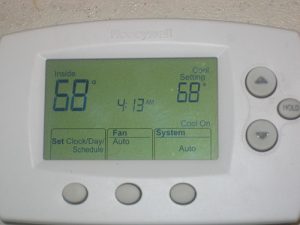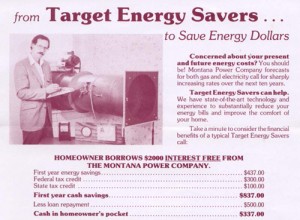I ran a building performance business, called Target Energy Savers, from 1980 to 1987 in a small market: Helena, Montana. Population 40,000. In a small market, versatility is important.
Back in the early 80’s, Target Energy Savers targeted the most prosperous homeowners and businesses with the highest energy bills. Even among this group and during the period just after the Arab oil embargo, energy savings alone wasn’t enough to sell a sufficient amount of contracting work to keep a small company going. Not even with no-interest loans and tax credits.
At Target Energy Savers we had to include repairs for the homeowners and resolve “deferred maintenance” issues for the businesses. The accountants (decision makers) for the businesses liked the term “deferred maintenance” and believed that maintenance costs more the longer you wait. Energy conservation, comfort enhancement, healthy buildings, maintenance, and repair improve a building’s performance, which is a good investment. It’s not too difficult to get potential customers to agree with that. It seems to make sense to them.

We figured that we could count on an 8% reduction in gas cost from a programmable thermostat. This required training family members how to program and operate the thermostat.
Target Energy (still in business) made claims of energy savings based on energy cost reductions of previous customers that we monitored from the energy bills. Those claims never exceeded 30% and we guaranteed savings for some high-bill customers. Our leading products were programmable thermostats, insulation, blower-door guided air sealing, window quilt, and heating improvements such as tune-ups and vent dampers.
I believe that offering a more comprehensive line of building-performance products and services increase sales of effective energy conservation. The preservation of our building stock also has an ROI like the energy savings and, like the energy savings, must be thought of as a continuing process.Today it is difficult to invest safely at 4% ROI (Return On Investment). Why do we have to promise 20% ROI to sell a home performance job? As for sales, we had a yellow pages ad but we never expected a customer to call us. We used referrals, cold calls, canvassing, home shows, and persistence.
For a comprehensive description of the most important home energy conservation measures (ECMs), read The Homeowners Handbook to Energy Efficiency.

